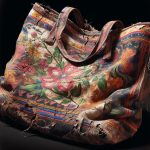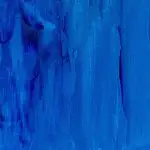If you've ever been frustrated with blotchy fabric dye ruining your masterpiece, fear not! With these 5 practical tips, you'll become a master at fixing those pesky dye mishaps.
No more throwing away your favorite garments or DIY projects – you'll have the expertise to salvage them all.
So, let's dive in and learn the secrets to:
- Pre-washing fabric
- Using color remover
- Re-dyeing effectively
- Experimenting with ombre dyeing
- Employing fabric paint for those perfect touch-ups.
You'll soon have the confidence and know-how to tackle any blotchy fabric dye disaster like a pro!
Key Takeaways
- Pre-wash fabric to remove residual chemicals and impurities
- Use color remover to strip uneven dye distribution
- Follow dye manufacturer's instructions for re-dyeing
- Use fabric paint for touch-ups in areas that didn't absorb dye properly
Pre-Wash the Fabric
Before applying any dye-fixing methods, pre-wash the fabric to remove any residual chemicals or impurities. This step is crucial for ensuring that the fabric is clean and ready to absorb the dye-fixing solutions effectively. When pre-washing the fabric, use a mild detergent that's gentle on the fibers to avoid damaging the material. Additionally, it's important to wash the fabric in cold water to prevent any excess dye from setting further into the fibers. Gently agitate the fabric in the water to help release any loose dye particles. After pre-washing, thoroughly rinse the fabric to ensure that all detergent and loose dye are completely removed.
Proper fabric care, including pre-washing, is essential for preparing the fabric to receive any dye-fixing treatments effectively. By pre-washing the fabric, you aren't only removing excess dye but also ensuring that the fabric is in the best possible condition for the subsequent dye-fixing processes. This attention to detail in fabric care sets the foundation for successful dye-fixing and ultimately achieving the desired results in the fabric's coloration.
Use Color Remover
How can you effectively address blotchy fabric dye? Start by using a color remover to target and eliminate uneven dye distribution. Color removers are an effective way to fix blotchy fabric dye by stripping the color from the fabric, allowing you to start the dyeing process anew. When using a color remover, it's important to follow the instructions carefully to ensure optimal results.
| Pros | Cons | Tips |
|---|---|---|
| Removes dye | Harsh on fabric | Test on a small area |
| Restores color | Fades original color | Use color fixatives |
| Even dyeing | Requires re-dyeing | Consider dye blending |
Using color removers can be harsh on the fabric, so it's crucial to test the product on a small, inconspicuous area before proceeding. Additionally, once the fabric has been treated with a color remover, it's essential to use color fixatives when reapplying dye to help set the color and prevent future blotchiness. Consider dye blending techniques to achieve a more uniform and natural-looking color distribution.
Re-Dye the Fabric
To address blotchy fabric dye, start by re-dyeing the fabric to achieve a more even and consistent color. When re-dyeing, you can employ various techniques to blend the fabric dye effectively.
First, carefully follow the dye manufacturer's instructions, ensuring you use the right amount of dye for the fabric's weight. Before applying the dye, thoroughly wet the fabric to help the dye penetrate evenly.
Next, consider using a technique called color blending. This involves mixing different dye colors to create a custom shade that can help mask any blotchiness. Make sure to test the blended dye on a small, inconspicuous area of the fabric before applying it more broadly.
Additionally, while re-dyeing, apply the dye evenly and consistently to avoid creating new uneven patches. After the fabric has been dyed, rinse it thoroughly to remove any excess dye and then wash it according to the dye manufacturer's instructions.
Try Ombre Dyeing Technique
You can achieve a stylish and gradual color transition by experimenting with the ombre dyeing technique. Ombre dyeing creates a beautiful gradient effect, with colors blending seamlessly into each other.
Here's how you can master this technique:
- Preparation is Key
Start by selecting fabric and dye colors that complement each other. Consider using a light to dark color scheme for a classic ombre effect.
- Dye Application
Begin by fully immersing the fabric in the lightest dye solution. Gradually lift the fabric out of the dye at specific time intervals to create the desired color gradation.
Mastering the ombre dyeing technique requires precision and attention to detail. Achieving a flawless transition between colors demands a careful and methodical approach. By focusing on the gradient effect and color blending, you can elevate your fabric dyeing skills and create stunning ombre designs.
Use Fabric Paint for Touch-Ups
To seamlessly touch up any uneven dye areas, occasionally incorporate fabric paint for a smooth and consistent color finish on your fabric projects. When facing blotchy fabric dye, fabric paint can be a handy tool for fixing inconsistencies and achieving a flawless look. It allows you to blend and touch up specific areas that didn't absorb the dye properly, giving you greater control over the final result.
Fabric blending techniques are essential when using fabric paint for touch-ups. You can blend the paint with the existing dye to create a seamless transition and ensure that the touch-up areas match the rest of the fabric. When troubleshooting fabric dyeing issues, fabric paint serves as a reliable solution for addressing uneven or splotchy areas. By carefully applying and blending the paint, you can rectify any imperfections and achieve a professional-looking outcome.
Incorporating fabric paint into your dyeing toolkit provides you with a versatile method for perfecting your fabric projects and ensuring a consistent and polished appearance.
Frequently Asked Questions
Can I Use Household Items to Fix Blotchy Fabric Dye, Such as Vinegar or Baking Soda?
You can use household items to fix blotchy fabric dye. The vinegar method and baking soda method are natural remedies and DIY techniques. Vinegar helps to set the dye, while baking soda can help remove excess dye.
Are There Any Special Considerations for Fixing Blotchy Fabric Dye on Delicate or Specialty Fabrics, Such as Silk or Wool?
When fixing blotchy fabric dye on delicate or specialty fabrics like silk or wool, take extra care to preserve the fabric's integrity. Silk care involves gentle handwashing with mild detergent, while wool restoration benefits from a vinegar soak.
Is It Possible to Fix Blotchy Fabric Dye Without Using Chemicals or Dyes?
You can fix blotchy fabric dye without chemicals or dyes using natural remedies. Start by blending colors with fabric care in mind. Consider gentle fabric restoration techniques like vinegar or saltwater soaks to even out the dye.
How Can I Prevent Blotchy Fabric Dye in the Future When Dyeing Fabrics at Home?
To prevent blotchy fabric dye, focus on preventive measures. Use proper fabric preparation, ensure even dye application, and consider color blending techniques. Pre-soaking fabric and thorough stirring during dyeing can help achieve more consistent results.
Are There Any Professional Services or Products Available for Fixing Blotchy Fabric Dye if DIY Methods Don't Work?
If your DIY methods don't work, professional services offer fabric restoration and color correction. Commercial products are available for fixing blotchy fabric dye. These options can help you achieve the desired color consistency.
- Does Chiffon Fabric Stink - July 15, 2025
- Does Chiffon Fabric Affect the Economy - July 15, 2025
- Does Cotton Fabric Have a Nap - July 15, 2025





